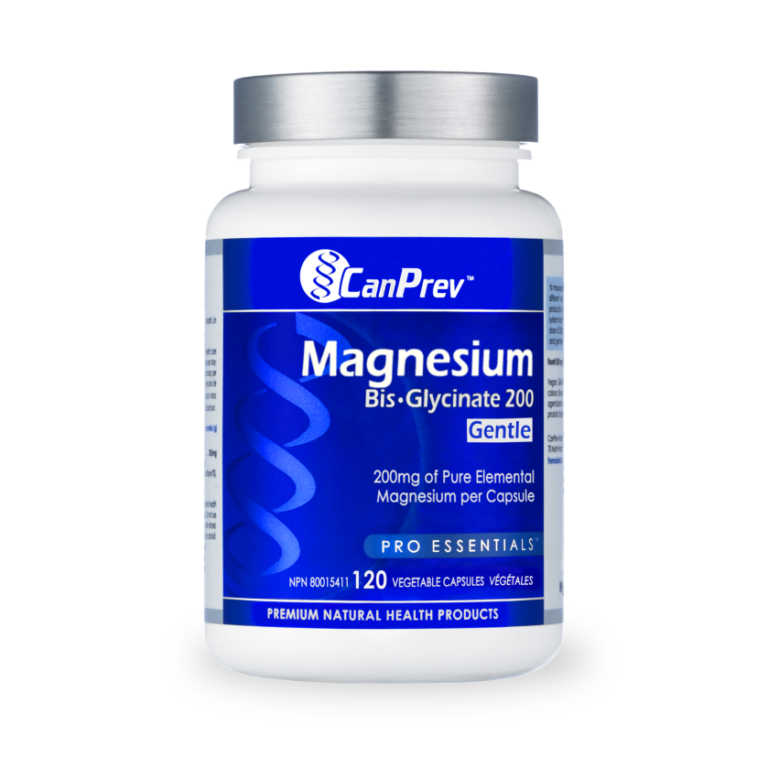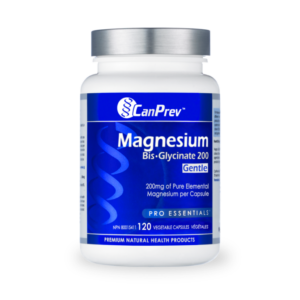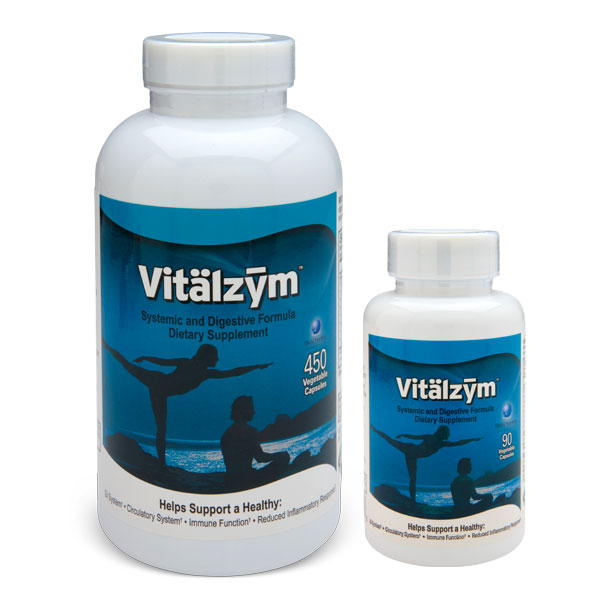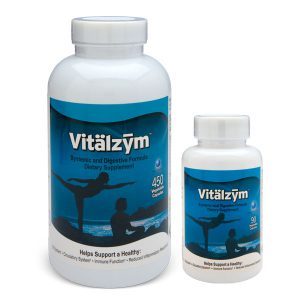 Systemic enzymes, used throughout Europe and Asia for decades, play an integral role in maintaining and supporting every function within the body. Enzymes are proteins that act as catalysts for thousands of chemical reactions necessary for life. Enzymes are essential for sparking these reactions in the functions of growth, repair, reproduction, digestion, and metabolism system-wide. They also play a key role in regulating inflammation and fibrin in the body, signaling the body when to stop producing fibrin, as well as eliminating excess fibrin that has accumulated.
Systemic enzymes, used throughout Europe and Asia for decades, play an integral role in maintaining and supporting every function within the body. Enzymes are proteins that act as catalysts for thousands of chemical reactions necessary for life. Enzymes are essential for sparking these reactions in the functions of growth, repair, reproduction, digestion, and metabolism system-wide. They also play a key role in regulating inflammation and fibrin in the body, signaling the body when to stop producing fibrin, as well as eliminating excess fibrin that has accumulated.
The strength and concentration of our enzymes is directly related to how well our bodies fight disease and infection, repair injured tissue, and sustain the body’s multitude of functions. Without an adequate supply of systemic enzymes, we can suffer from impairment in digestion, scar tissue/fibrin regulation, blood coagulation, reproduction, respiration, and the immune system. A chief complaint common to all these impairments is pain. Enzymes are truly vital for a healthy body, one that is free of chronic pain.
Generally speaking, the body has a sufficient supply of enzymes through the age of 25. As our natural enzyme supply diminishes over time, we may notice that we take longer to heal and “bounce back” compared to when we were younger. Without enzymes, we are more susceptible to diseases, we age more quickly, and our bodies degenerate faster. Systemic Enzyme Therapy can stem this tide and help replace what has been lost due to age and other factors.
Systemic enzymes are different from digestive enzymes, although they certainly aid in digestion as well. Systemic simply means that the enzymes are designed to work throughout the body. While digestive enzymes are taken with food to support assimilation and absorption of nutrients, systemic enzymes are taken on an empty stomach so that they may reach the small intestine where they are absorbed and sent into the bloodstream. Systemic enzymes are adaptogenic in nature – up-regulating and down-regulating as needed to return the body to homeostasis and balance – greatly reducing pain, inflammation, circulatory impairment, and any other condition resulting from a lack of enzyme activity. Systemic enzyme formulas may also contain the digestive enzymes amylase and lipase to assist with clearing out any residual undigested carbohydrates and fats that are circulating in the bloodstream.
The Four “R”s of Systemic Enzymes: Reduce, Regulate, Remove, and Restore
Systemic enzymes support the health and well-being of the body with their significant ability to:
•Combat chronic inflammation
•Neutralize rogue proteins in the blood that can trigger a hyper-autoimmune response
•Break down excess fibrin that contributes to scar tissue and fibrosis
•Reduce build-up in the arteries thus improving blood flow and circulation
Restoring each of these functions in the body not only targets specific health concerns and conditions but provides whole-body support as well.
1)Reduce Pain and Inflammation
At the root of just about every imbalance or dysfunction in the body, we will find either a protein or a mechanism that is protected by a protein, all of which are subject to control by proteolytic (systemic) enzymes. Enzymes have the ability to digest and destroy the protein-based defense shield of each and every pathogen, allergen, and rogue cell, thereby leading to their ultimate elimination.1 Systemic enzymes break down these substances in the blood that would otherwise create inflammation and infection. This ability may benefit those experiencing chronic inflammation, and its related pain, due to surgery, stress, toxic overload, inadequate nutrition, over-worked muscles, injuries, etc.
Healthy tissues are vulnerable to chronic inflammation and injury caused by foreign tissue growth when enzyme levels are too low to regulate normal repair processes. This, in turn, may lead to scar tissue and adhesion formation in the surrounding structures. Pain is often the result of these conditions and may be the first sign of a problem such as injury, fibroids, or arthritis. Reducing inflammation with Systemic Enzyme Therapy may be a useful strategy for reducing pain by way of clearing inflammation and halting the inflammatory process.
2)Regulate the Immune System
When we think of the immune system, the conversation almost always revolves around a low or decreased immune system. Certainly, addressing low enzyme levels in the body can improve a weakened immune system. Many times, patients are experiencing the opposite – a hyper-immune response that the body seems to have difficulty in turning off. Systemic enzymes restore balance by its ability to both up-regulate and down-regulate the immune response. A balanced and well-functioning immune system ensures protection from viable pathogens while protecting healthy tissues from auto-immune antibodies. Patients who suffer from pain as part of an auto-immune response may experience relief that other treatments have failed to address. The proteolytic activity of systemic enzymes may also provide protection against virus proliferation through their ability to neutralize the defense shield of the virus, thereby preventing the virus from attaching to healthy DNA. Systemic enzymes are non-toxic and without side-effects, making them a great alternative to traditional pain medications.
3)Remove Excess Fibrin
A primary role of systemic enzymes is to dissolve and digest non-living tissue – scars, excess fibrin which may be found in fibrous cysts in the reproductive system, and blood clots. Scar tissue and adhesions are the result of excess fibrin that accumulates when a lack of systemic enzymes prevents the body from knowing when to stop producing fibrin during the healing process. Systemic enzymes target only the excess or damaging fibrin/scar tissue and help regulate normal, healthy fibrin levels, as they are necessary for healing and repair after surgery or an injury. Resolving issues of excess fibrin and scar tissue can have a tremendous impact on patient pain and discomfort.
Systemic Enzyme Therapy: Removing and Preventing Excess Fibrin
•Supports the body’s innate defense system to moderate inflammatory response
•Supports cleansing of the tissues
•Breaks down the rogue or “extra-large” proteins circulating in the blood that can lead to pain, inflammation, and infection
•Removes excess fibrin, which results from unregulated inflammation and scar tissue/adhesion formation
Once the enzymes neutralize the proteins, the lymphatic and circulatory system can then eliminate them through normal detoxification processes. As excess unhealthy tissue is removed, proper blood flow is restored, promoting better circulation. After previous scar and other necrotic tissues have been eliminated, enzymes continue to keep the inflammatory response in balance so that further excess fibrin does not build up again.
4)Restore Blood Flow
Systemic enzymes promote healthy blood circulation in two primary ways. First, enzymes clear unhealthy build-up in the circulatory system (plaque) similar to the way they “eat up” excess fibrin in other systems. Removal of plaque and excess fibrin in the blood vessels cleanses the blood of debris and toxins, improving blood flow and volume, while also stimulating the growth of healthy tissue. Cardio-vascular health stands to benefit greatly from these improvements in the circulatory system.
Systemic enzymes also improve circulation by increasing the flexibility of red blood cells, defending against the accumulation of platelets, and preventing abnormal blood clotting. In laymen’s terms, the blood becomes less “sticky”. Healthy blood flow and volume benefits every system in the body, but especially in areas in need of repair and regrowth. Systemic Enzyme Therapy may be beneficial in restoring overall function, improving delivery of oxygen and nutrients, and easing micro-circulatory issues of cold hands/feet and edema.
As the blood supply is cleansed and healthy circulation is restored, systemic enzymes further support the body by removing “stagnant blood”, toxins, and debris. Clean oxygenated blood can then reach the primary organs unimpeded. Stagnant, sticky blood also plays a role in the imbalances known as endometriosis, PCOS, heavy dark menses, ovarian cysts, and uterine fibroids.

 Chronic inflammation is at the root of an estimated 75-90% of all chronic disease.
Chronic inflammation is at the root of an estimated 75-90% of all chronic disease.

